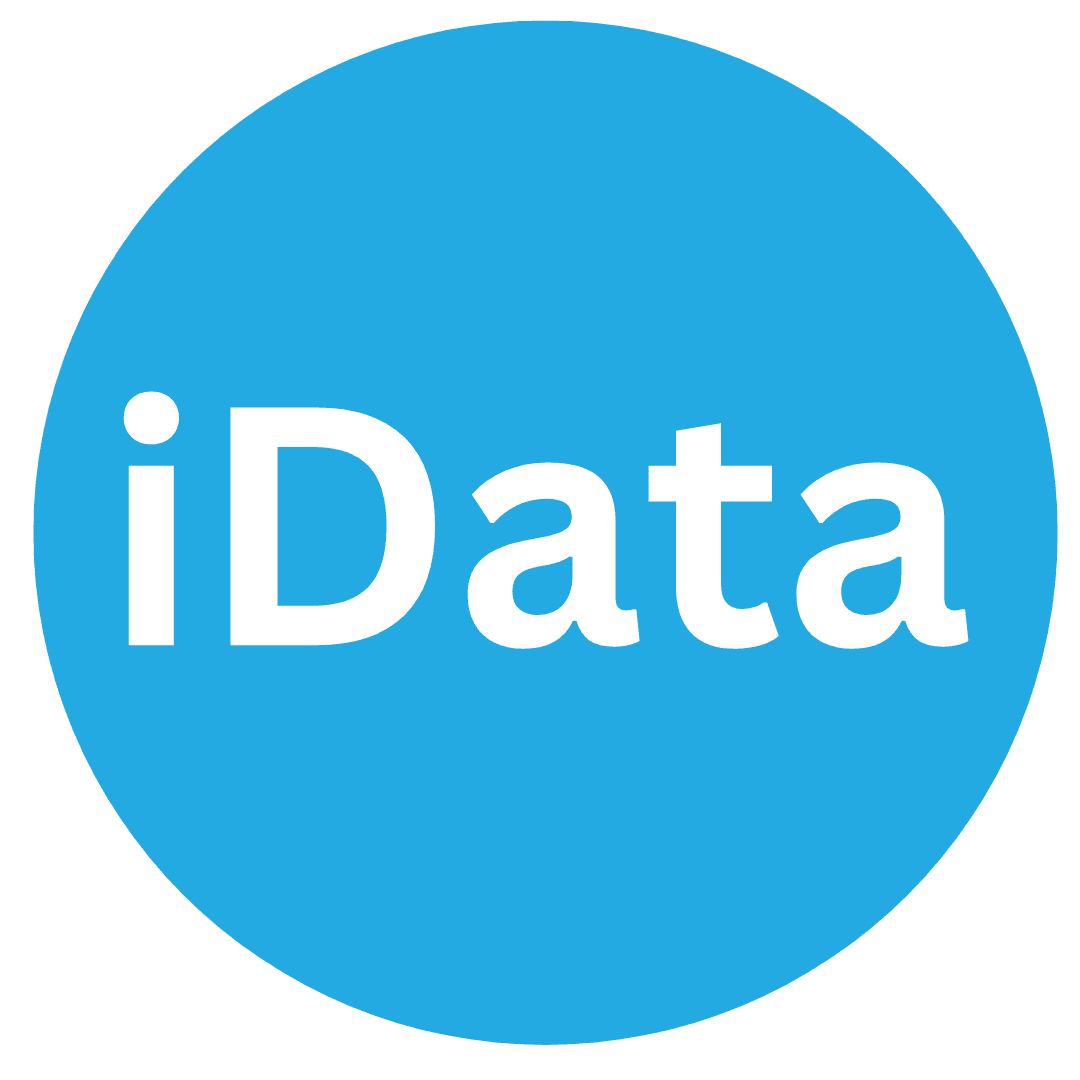Data Analysis-Comparison analysis
Data Analysis-Comparison analysis

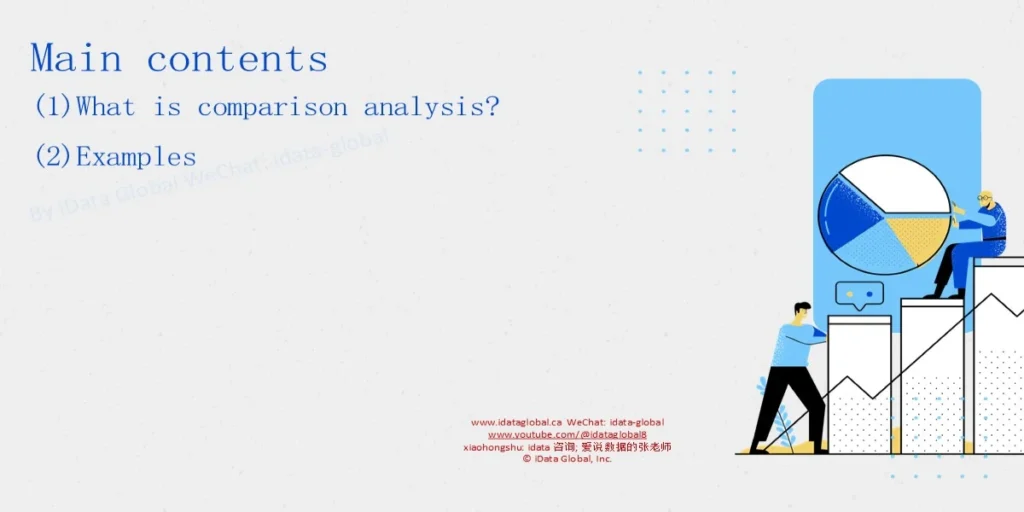
Main contents
- What is comparison analysis?
- Examples
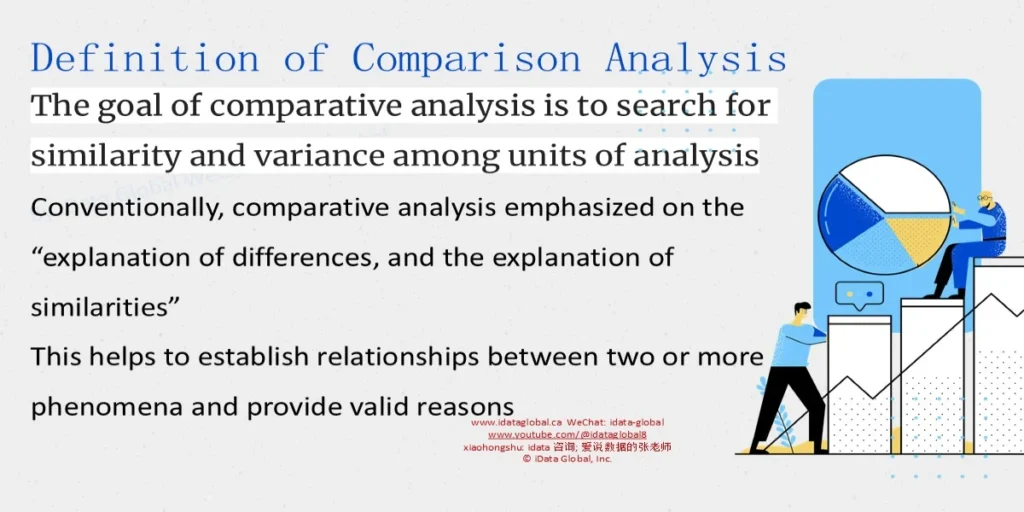
Definition of Comparison Analysis
- The goal of comparative analysis is to search for similarity and variance among units of analysis.
- Conventionally, comparative analysis emphasized on the “explanation of differences, and the explanation of similarities.”
- This helps to establish relationships between two or more phenomena and provide valid reasons.
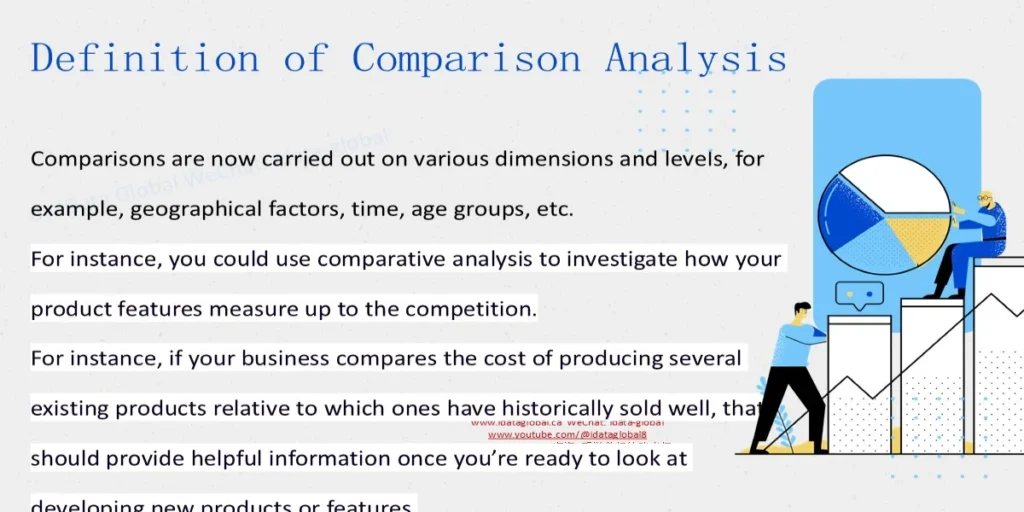
Definition of Comparison Analysis
- Comparisons are now carried out on various dimensions and levels, for example, geographical factors, time, age groups, etc.
- For instance, you could use comparative analysis to investigate how your product features measure up to the competition.
- For instance, if your business compares the cost of producing several existing products relative to which ones have historically sold well, that should provide helpful information once you’re ready to look at developing new products or features.
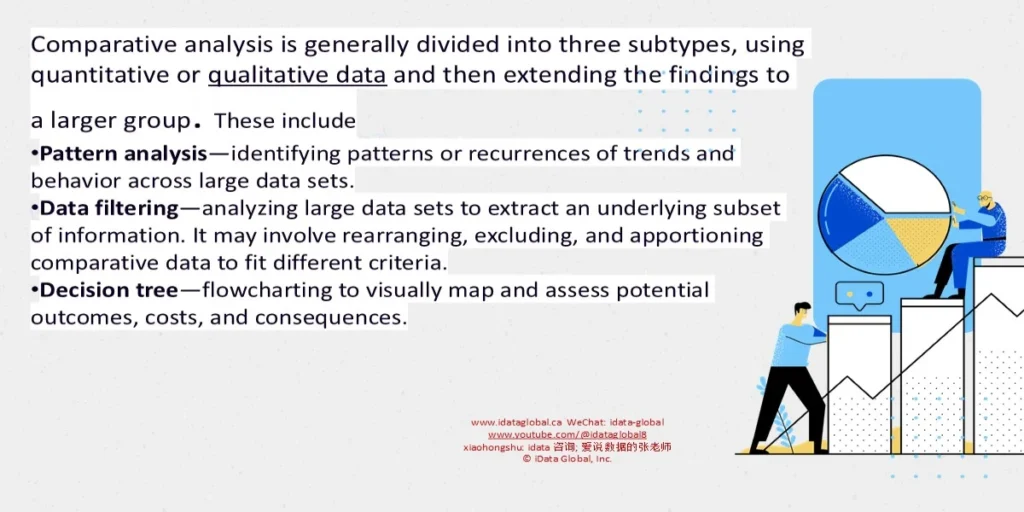
Comparative analysis is generally divided into three subtypes
- Using quantitative or qualitative data and then extending the findings to a larger group.
- These include:
- Pattern analysis—identifying patterns or recurrences of trends and behavior across large data sets.
- Data filtering—analyzing large data sets to extract an underlying subset of information. It may involve rearranging, excluding, and apportioning comparative data to fit different criteria.
- Decision tree—flowcharting to visually map and assess potential outcomes, costs, and consequences.
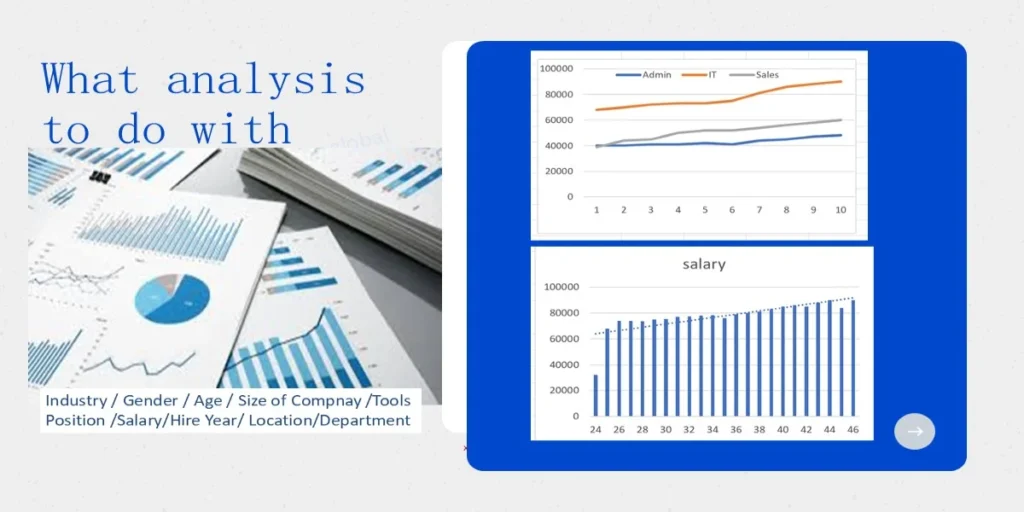
What analysis to do with data?
- Industry / Gender / Age / Size of Company / Tools Position / Salary/Hire Year/ Location/Department
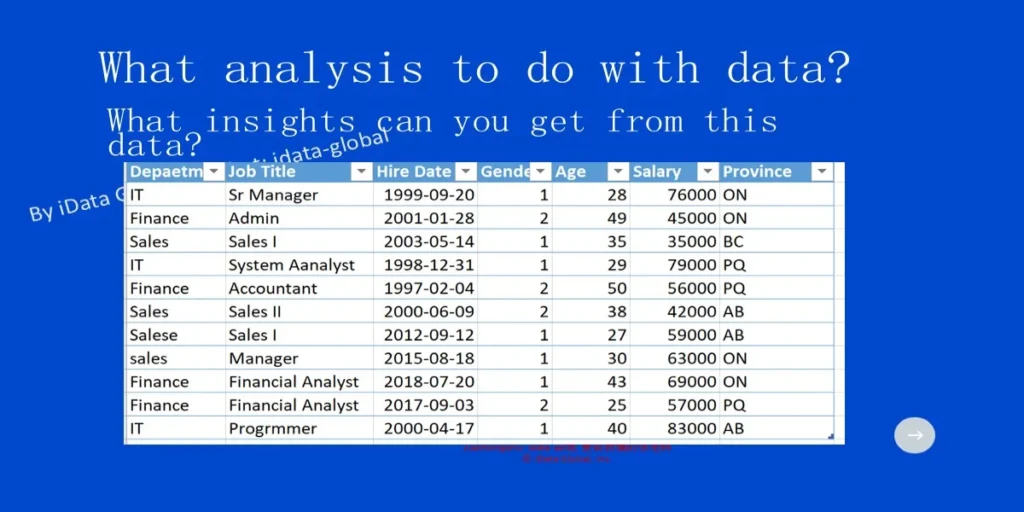
Data Analysis and Business Insights
- What is the business problem?
- What data to analyze?
- How to analyze the data?
- Business case 1: More customers apply for loan in August than July
- Business case 2: Internet service demand increased at beginning of COVID
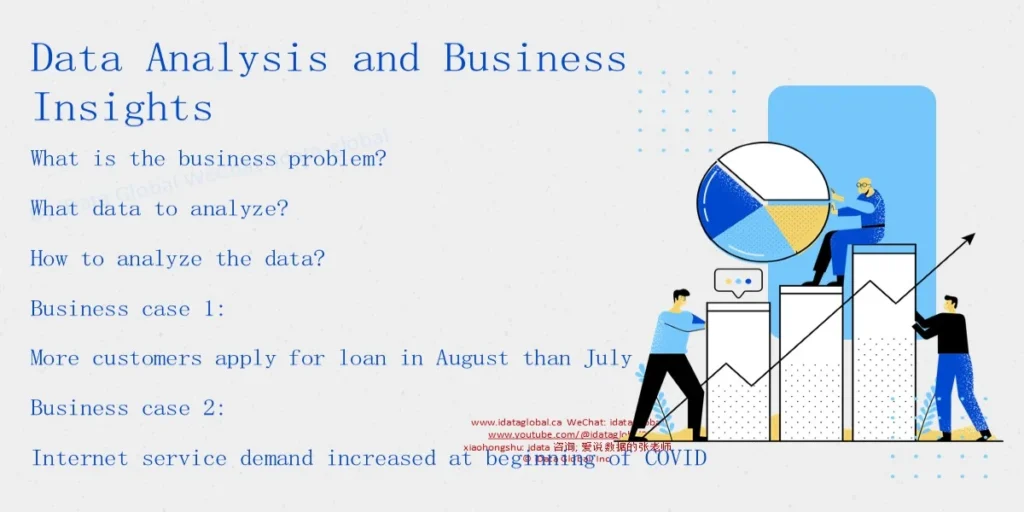
Data Analysis and Business Insights
- Five Big customer satisfaction: static/ dynamic/disassemble
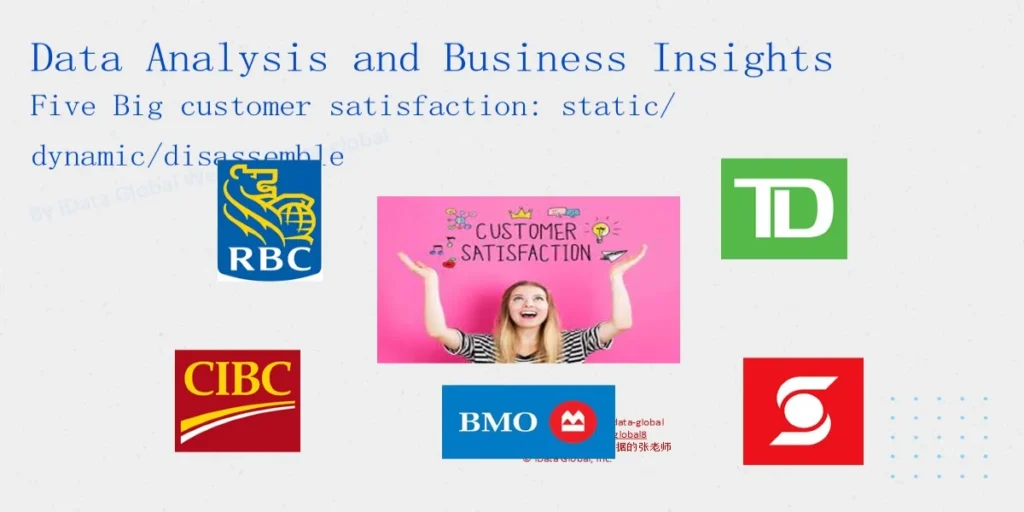
Data Analysis and Business Insights
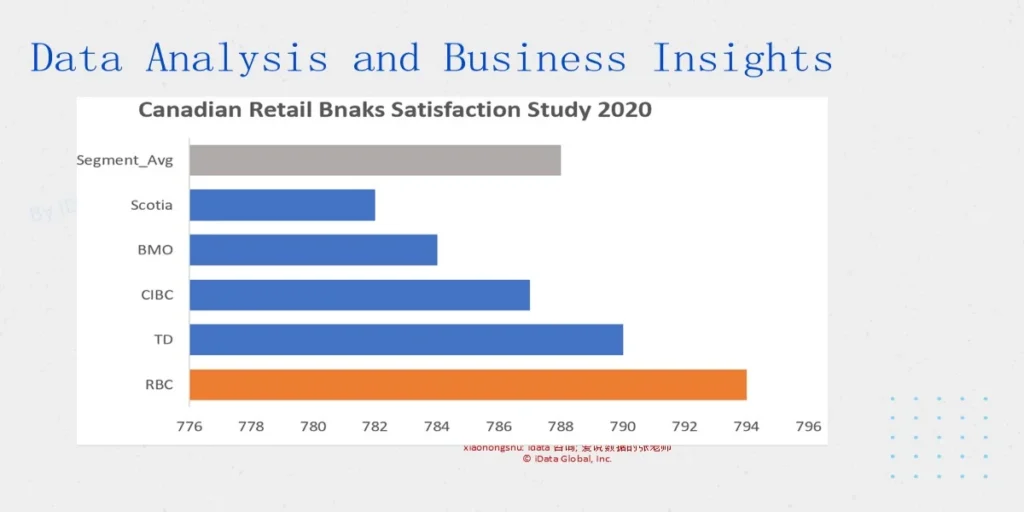
Data Analysis and Business Insights
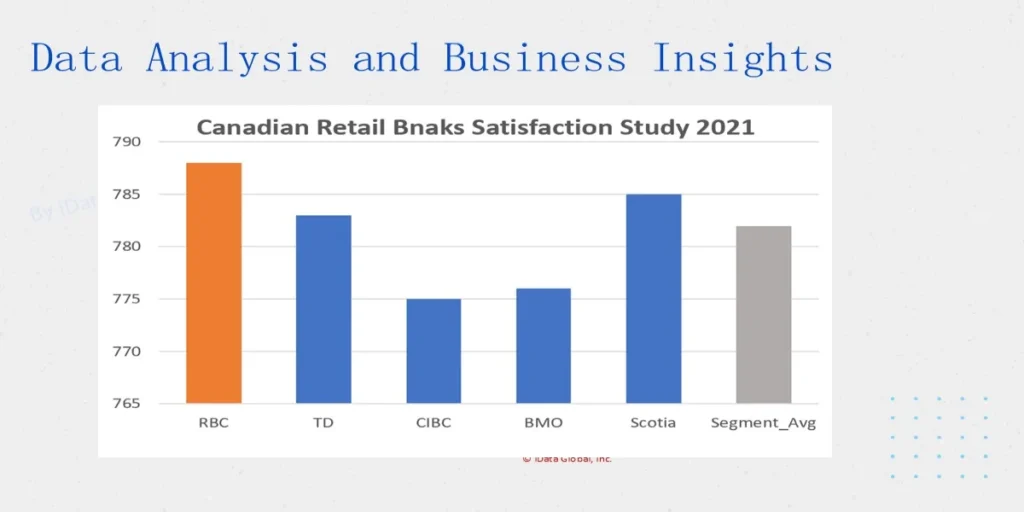
Data Analysis and Business Insights
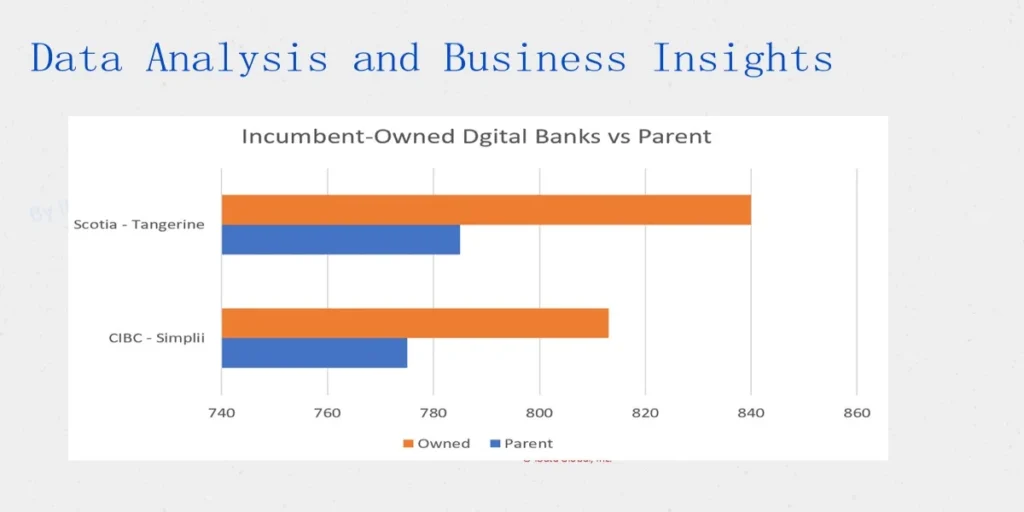
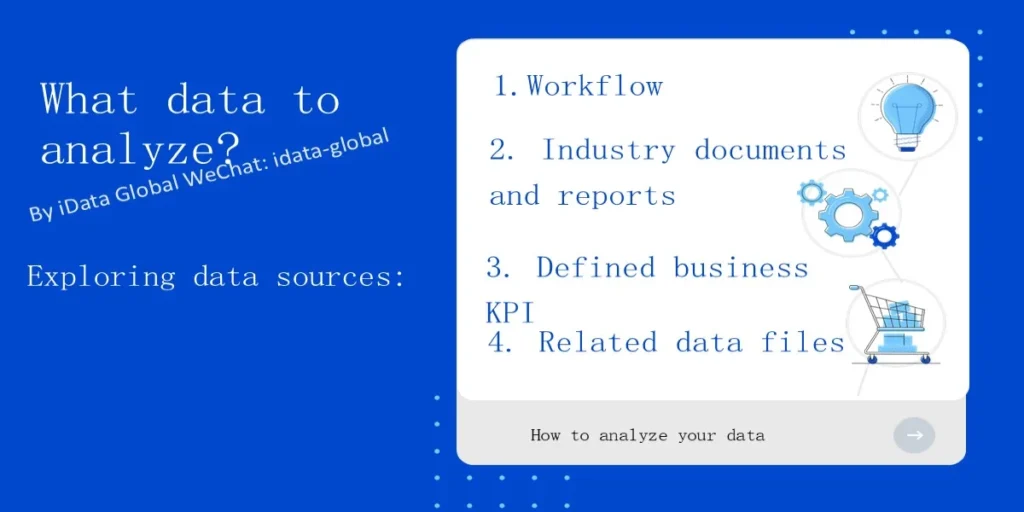
Workflow
- What data to analyze? Exploring data sources:
- Industry documents and reports
- Defined business KPI
- Related data files
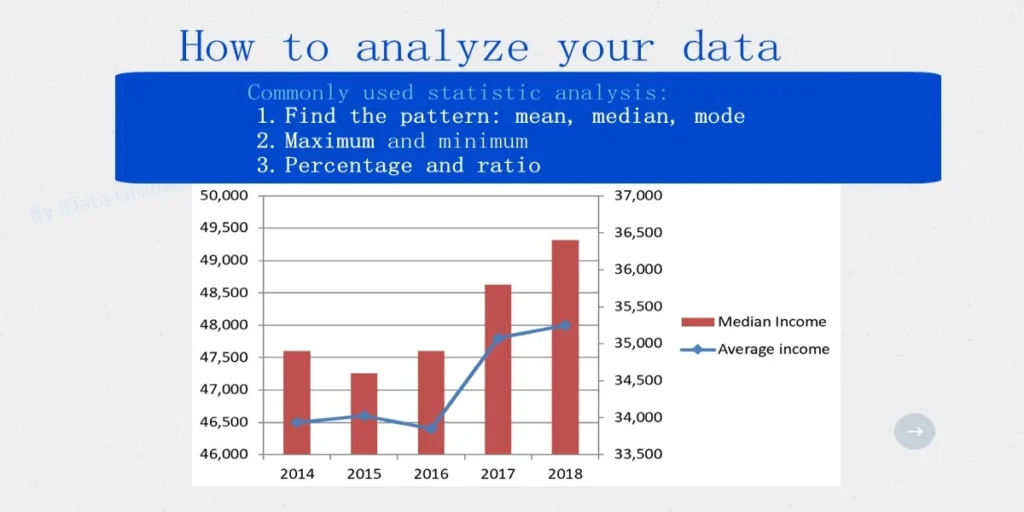
How to analyze your data
- Commonly used statistic analysis:
- Find the pattern: mean, median, mode
- Maximum and minimum
- Percentage and ratio
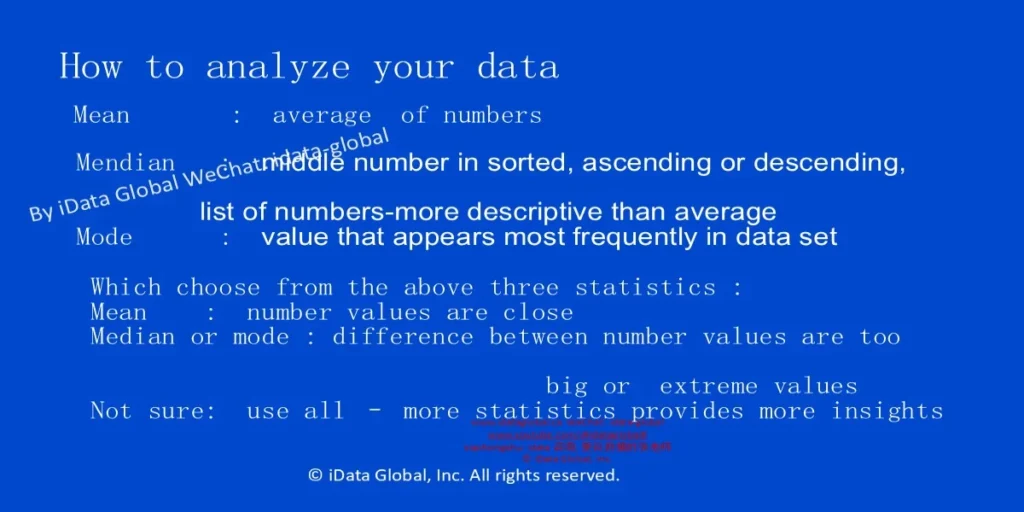
How to analyze your data
- Mean: average of numbers
- Median: middle number in sorted, ascending or descending, list of numbers-more descriptive than average
- Mode: value that appears most frequently in data set
- Which to choose from the above three statistics:
- Mean: number values are close
- Median or mode: difference between number values are too big or extreme values
- Not sure: use all – more statistics provides more insights
- © iData Global, Inc. All rights reserved.
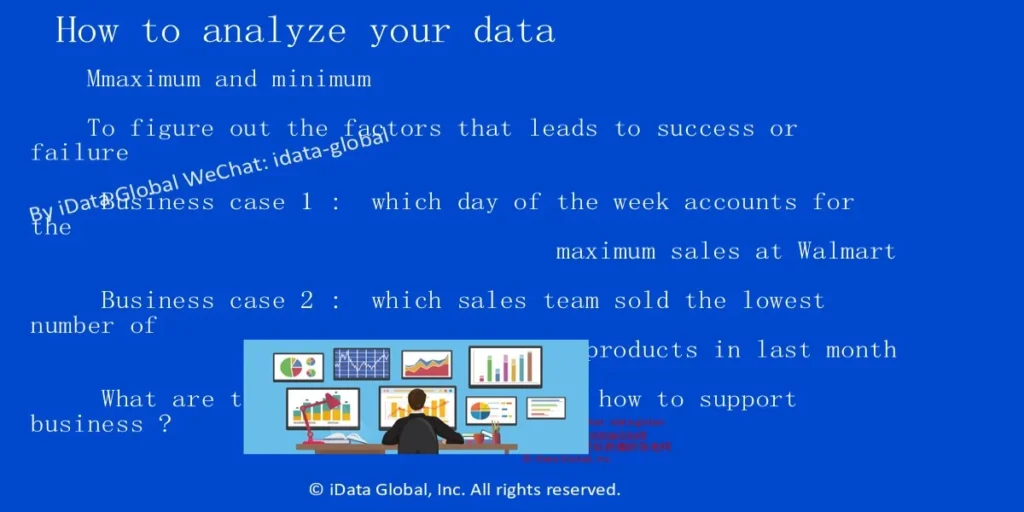
How to analyze your data
- Maximum and minimum
- To figure out the factors that leads to success or failure
- Business case 1: which day of the week accounts for the maximum sales at Walmart
- Business case 2: which sales team sold the lowest number of products in last month
- © iData Global, Inc. All rights reserved.
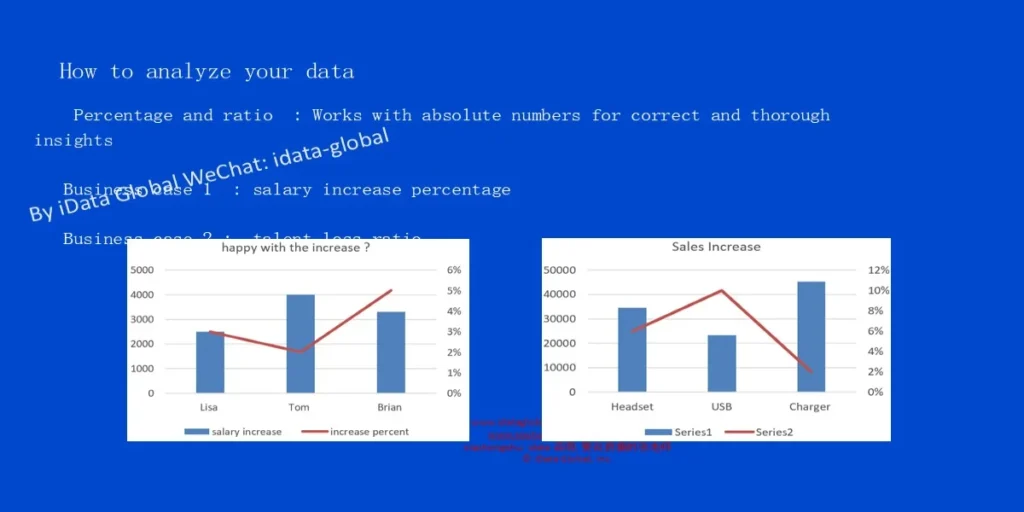
How to analyze your data
- Percentage and ratio: Works with absolute numbers for correct and thorough insights
- Business case 1: salary increase percentage
- Business case 2: talent loss ratio
- © iData Global, Inc. All rights reserved.

WeChat: 微信公众号
WeChat: Love_toronto_
最新Job listing
iData Global 拥有丰富的培训经验及强大的人脉,为学员提供各个行业的内推机会。
了解更多
数据分析专题文章
酒店预订数据分析报告(Pivot Table 实战案例)
2025年9月10日
用Excel深度剖析零售数据,解锁业绩增长密码
2025年8月12日
AI时代的数据分析师:从工具到思维,如何用技术重塑你的工作方式?
2025年7月24日
数据可视化革命:Tableau一键引爆?
2025年7月1日
Python for Office Automation
2025年6月17日
Excel data analysis: Risk management
2025年6月3日
Frustrated ! Self study data analysis
2025年5月22日
How to find Job in Big 5 Canadian Banks
2025年5月22日
你也可以成为AI提问师
2024年10月31日
